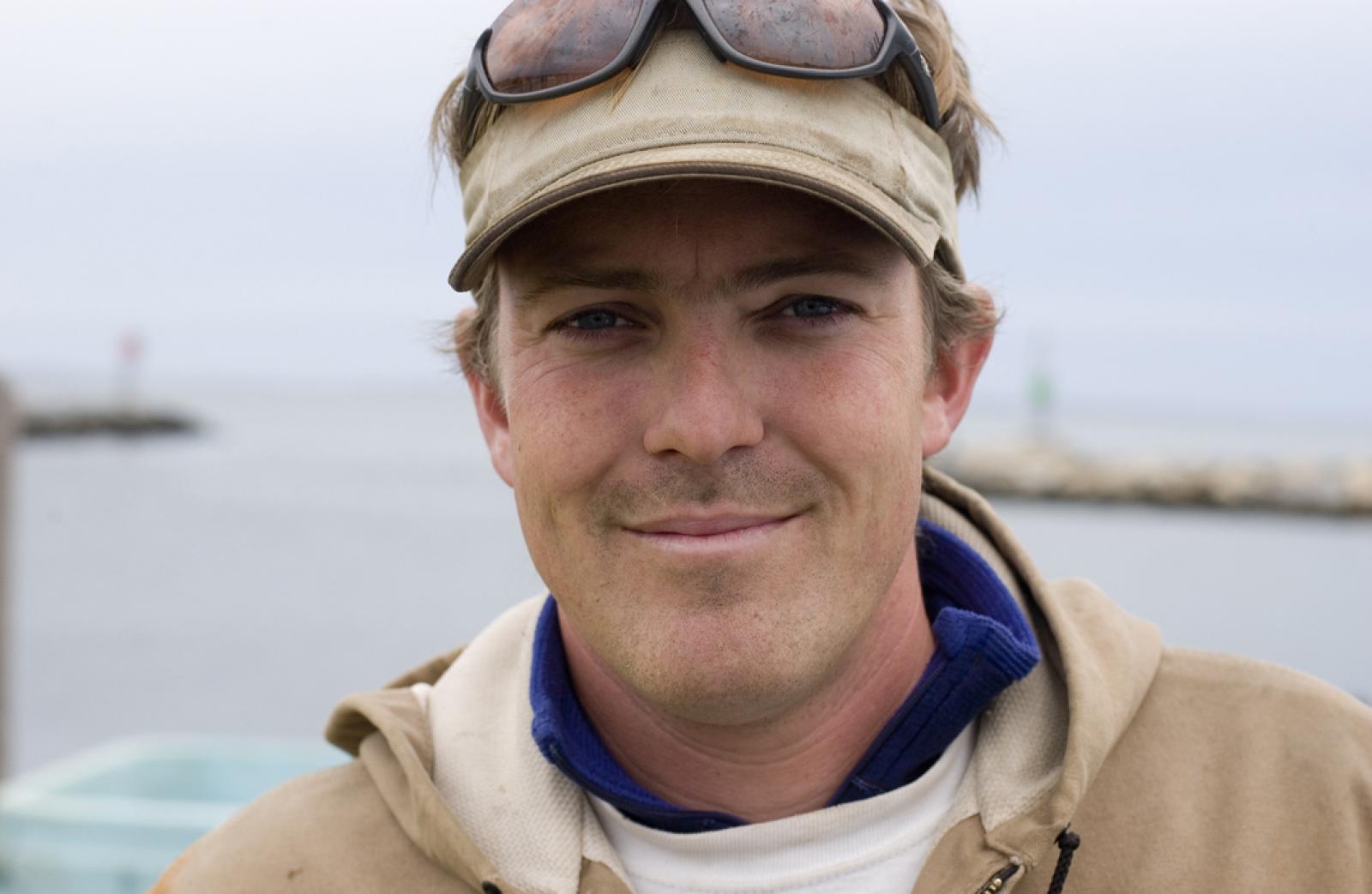The Vineyard’s first experimental blue mussel farm began operating in waters off Cape Higgon in Chilmark this past week.
Two weeks ago fishermen suspended a 500-foot cable 30 feet underwater in Vineyard Sound. Last week they hung lines on the cable that were loaded with juvenile blue mussels, held to the line by a biodegradable fabric called socks.
If the project is successful, by the end of next year the mussels will be marketable.
“People love to eat mussels,” said Tim Broderick, 33, a Chilmark fisherman. He and Alec Gale, also 33, of West Tisbury have formed a partnership to tend the small mussel farm. They installed the underwater gear using Mr. Gale’s boat Jane Lee, a 55-foot work boat he uses for sea clamming in the winter and transporting locally caught fish to mainland markets in the summer.
Part of the project is underwritten through a $214,000 National Oceanic and Atmospheric Administration (NOAA) aquaculture grant that includes a similar project in Rhode Island. The Vineyard portion of the project is being administered by the Martha’s Vineyard Shellfish Group and it includes partnerships with the Marine Biological Laboratory in Woods Hole. Funding has also come from the Menemsha Fisheries Development Fund.
“It felt really good, getting that part of the job done,” said Mr. Broderick this week at West Dock in Menemsha. He and Mr. Gale will visit the site every other week to see how the mussels are doing.
“This means a lot,” said Mr. Gale. “This is something we are doing that looks to the future. I’ve seen commercial fishing go from pretty good to pretty bad. It is exciting here to be looking at an opportunity for a bunch of guys to stay employed in the wintertime.”
While the physical work of establishing the farm was done by the two on a boat over several days, an equally large effort took place on shore, as various people navigated a daunting bureaucratic maze to obtain permits for the project. It took years.
Rick Karney, director of the Martha’s Vineyard Shellfish Group, handled most of the paperwork, which included approvals from the Army Corps of Engineers, town conservation commissions, Coastal Zone Management and state Division of Marine Fisheries. Even the state Board of Underwater Archeology had to sign off on the experiment.
The project almost sank beneath the weight of the permitting process, Mr. Karney said. “We got the final okay six weeks ago,” he said. Gear, including anchors, line and buoys had already been purchased; in a more perfect world, the mussel farm could have started before summer.
Scott Lindell, director of the Scientific Aquaculture Program at the Marine Biological Laboratory, praised Mr. Karney’s efforts in clearing hurdles. “It took some heroic effort on the part of Rick,” he said.
The dividends are expected to be great. “Fishermen should have alternatives to making a living,” Mr. Lindell said. “They can have a product where they are the stewards. They use their own boats and can work. Without product to farm or fish, many of these waterfront communities will become displaced by leisure crafts and when that happens they won’t be fishing communities again.”
Mr. Karney added his thoughts. “We went through a lot of rigamarole,” he said. The project began as an idea three years ago, sparked by a presentation given by Richard Langan, an aquaculture specialist with the University of New Hampshire who gave a talk at the Chilmark library about a blue mussel farm at Isle of Shoals. More than a dozen local fishermen attended, and the ball began rolling to build a mussel farm project here.
In 2007 three experimental buoys were put off Cedar Tree Neck in West Tisbury, Cape Higgon in Chilmark and Noman’s Land in Chilmark. By the end of the summer, the underwater cables attached to the buoys were loaded with young blue mussels. The mussels had no pea crabs, tiny crabs commonly found in wild blue mussels that while harmless, are considered an impediment to marketing the shellfish.
Funding for the experiment came from the Massachusetts Department of Agricutlrual Resources, the Martha’s Vineyard Permanent Endowment Fund, MBL and the Menemsha Fisheries Development Fund.
Mr. Karney also set out to designate two large areas off Chilmark and Aquinnah, within three miles from the shore, for future farming sites. Only the Cape Higgon site has been cleared for the experimental farm, and many obstacles remain before the other sites are cleared. For Mr. Karney it has become a David and Goliath battle.
“What has become clear to me is that in terms of regulations and the money required, the little guys are going to be pushed out of this,” he said. “It seems only a big corporation has the resources to do what has to be done. It is unfortunate; we are trying to preserve a lifestyle. The whole idea of Menemsha, the small-time fishing community, is difficult.”
Others have kept a positive outlook. “I think deep water offshore shellfish aquaculture has real potential for Martha’s Vineyard,” said Warren Doty, Chilmark selectman and president of the Menemsha Fisheries Development Fund. He continued: “Aquaculture in our coastal ponds is very difficult because there are so many conflicting uses.
“Chilmark selectmen, West Tisbury and Aquinnah selectmen really are dedicated to this idea. We are pushing for it at all levels.”
Meanwhile, Mr. Gale said he is looking for business partners to help underwrite the high cost of starting a mussel farm from scratch. While the money from the federal grant essentially helps with the cost of boat fuel, he and Mr. Broderick are shouldering an expensive startup venture.
“This is a stimulus package,” Mr. Gale said. “This will create jobs. When we start going out to harvest the blue mussels, we’ll need five or six guys with us to do the work. We are thinking a lot of Island restaurants can benefit from this. We’d like local businesses to help us.”







Comments
Comment policy »